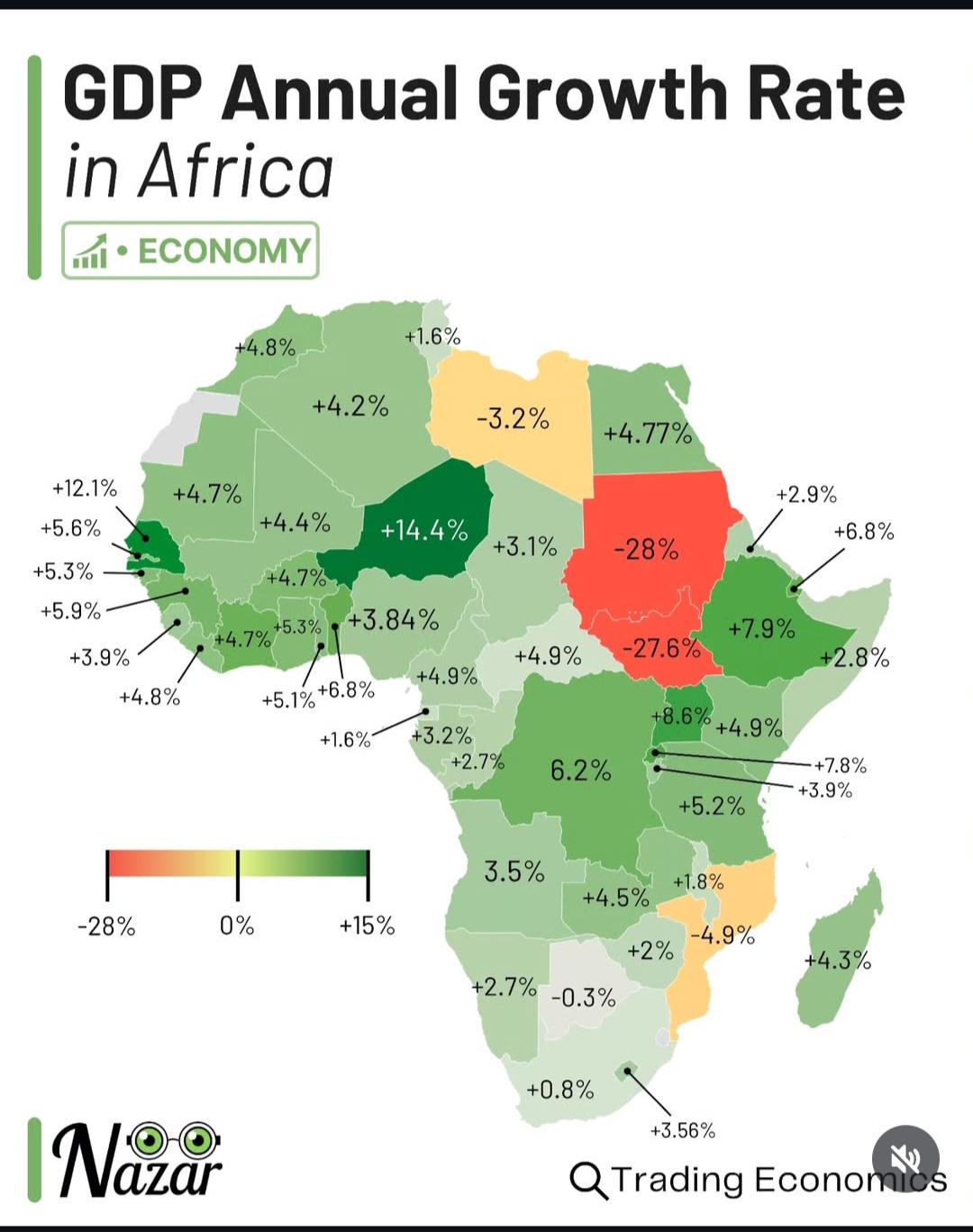GDP Annual Growth Rate Map for 2024


David Chen
Data Visualization Specialist
David Chen is an expert in transforming complex geographic datasets into compelling visual narratives. He combines his background in computer science ...
Geographic Analysis
What This Map Shows
The GDP Annual Growth Rate Map for 2024 illustrates the projected economic growth rates of various countries around the world, highlighting how different regions are expected to perform in terms of economic expansion. This visualization provides a clear snapshot of where economies are booming and where they may be stagnating, allowing viewers to grasp the economic landscape of 2024 at a glance.
As we delve deeper into the topic of GDP growth, it’s essential to understand that Gross Domestic Product (GDP) measures the total economic output of a country, and its growth rate indicates how quickly an economy is expanding. Analyzing GDP growth rates can reveal much about a country's economic health, stability, and potential for development.
Deep Dive into GDP Growth Rate
GDP growth is influenced by a multitude of factors, including consumer spending, government policies, investment levels, and international trade. Interestingly, countries with diverse economies often show resilience against global economic fluctuations. For instance, nations that rely heavily on a single industry, such as oil or agriculture, may experience significant volatility in their GDP growth rates due to changes in commodity prices.
In 2024, some countries are projected to experience robust growth, while others may face challenges. For example, emerging economies in Southeast Asia, such as Vietnam and Indonesia, are anticipated to see significant GDP growth. This can be attributed to their young populations, increasing foreign investment, and a rise in manufacturing. According to the World Bank, Vietnam's GDP growth rate is expected to reach approximately 6.5%, driven largely by its burgeoning tech and production sectors.
Conversely, advanced economies, particularly in Europe, may see more modest growth rates due to various factors, including aging populations and high levels of government debt. For example, Germany's growth is projected at around 1.5%. This slower growth can be attributed to a combination of factors, including supply chain disruptions and a shift towards green energy, which, while beneficial in the long term, can create short-term challenges.
Additionally, the impact of geopolitical tensions and global trade policies cannot be overlooked. Countries involved in trade disputes may see fluctuations in their growth rates as tariffs and trade barriers disrupt normal economic activities. For example, the ongoing trade tensions between major economies can create uncertainty that affects investment decisions, thus impacting GDP growth.
Regional Analysis
Examining the map further, we can break down GDP growth projections by regions. In North America, the United States is expected to grow at around 2%, benefiting from a strong labor market and consumer spending. However, Canada may lag slightly behind due to its reliance on resource extraction and fluctuating commodity prices.
In contrast, Sub-Saharan Africa shows promising growth prospects, with countries like Ethiopia and Ghana projected to achieve growth rates of over 6%. These nations are capitalizing on infrastructure investments and a growing middle class, which fuels domestic consumption. However, challenges such as political instability and climate change remain prevalent.
Interestingly, Latin America presents a mixed picture. Brazil, the region's largest economy, is expected to grow at a modest rate of 1.5%, hampered by political uncertainties and economic reforms. On the other hand, countries like Chile and Peru are poised for better growth, thanks to their mining sectors and open trade policies.
Significance and Impact
Understanding GDP growth rates is crucial, as they not only reflect the economic health of a nation but also influence global markets, investment decisions, and policymaking. A higher GDP growth rate often leads to increased employment opportunities, improved living standards, and a stronger currency, while lower growth can indicate economic struggles and potential downturns.
As we look towards 2024, current trends indicate a gradual recovery from the economic impacts of the COVID-19 pandemic. However, uncertainties such as inflationary pressures, energy crises, and climate change pose significant challenges. Policymakers must navigate these complexities to foster sustainable growth.
Have you noticed how interconnected our global economies are? A downturn in one region can have ripple effects on others, underscoring the importance of understanding these growth projections. Looking ahead, keeping an eye on GDP growth rates can provide valuable insights into where economies are heading and how they may adapt in an ever-changing world.
Visualization Details
- Published
- August 10, 2025
- Views
- 96
Comments
Loading comments...